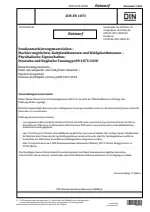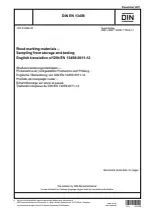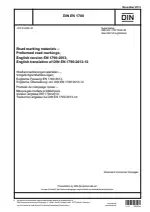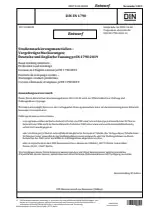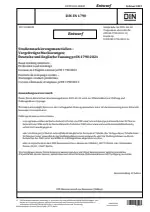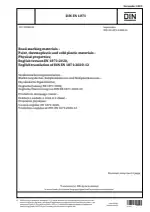Road Marking Materials - Paint, Thermoplastic and Cold Plastic Materials - Physical Properties
Also Known As:
The DIN EN 1871 standard focuses on the physical properties of various road marking materials. The standard provides laboratory requirements and test methods for the evaluation of reflectorized and other road marking materials, including both permanent and temporary options.
The standard aims to ensure that road marking materials meet the necessary physical criteria for safe and efficient use on road surfaces. It establishes guidelines for testing parameters to assess the performance and durability of such materials. By specifying the laboratory requirements and test methods, the standard helps in determining and comparing the physical properties of different road marking materials.
The DIN EN 1871 standard is crucial for manufacturers, suppliers, and users of road marking materials. It ensures that the materials used for road marking meet a certain set of physical properties, such as reflectivity, adhesion, abrasion resistance, and skid resistance. These properties play a vital role in the visibility and effectiveness of road markings, thereby enhancing road safety and traffic management.
| Descriptors | Abrasion, Abrasion resistance, Alkali resistance, Carriageways, CE marking, Coldness, Colour, Conformity, Construction, Definitions, Heat resistance, Horizontal, Laboratory testing, Luminance, Marking, Marking materials, Materials, Physical properties, Process control rooms, Production control, Properties, Qualification tests, Reflection, Reflective, Reflective materials, Road marking, Road marking materials, Road safety, Roads, Specification (approval), Testing, Thermoplastic, Traffic control systems, Transportation safety, Streets, Refractoriness |
| ICS Codes | 93.080.20 - Road construction materials |
| Language(s) | English + German |
| File Size | 9.4 MB |

